How the F-4 Phantom II became the best-selling supersonic fighter in US history
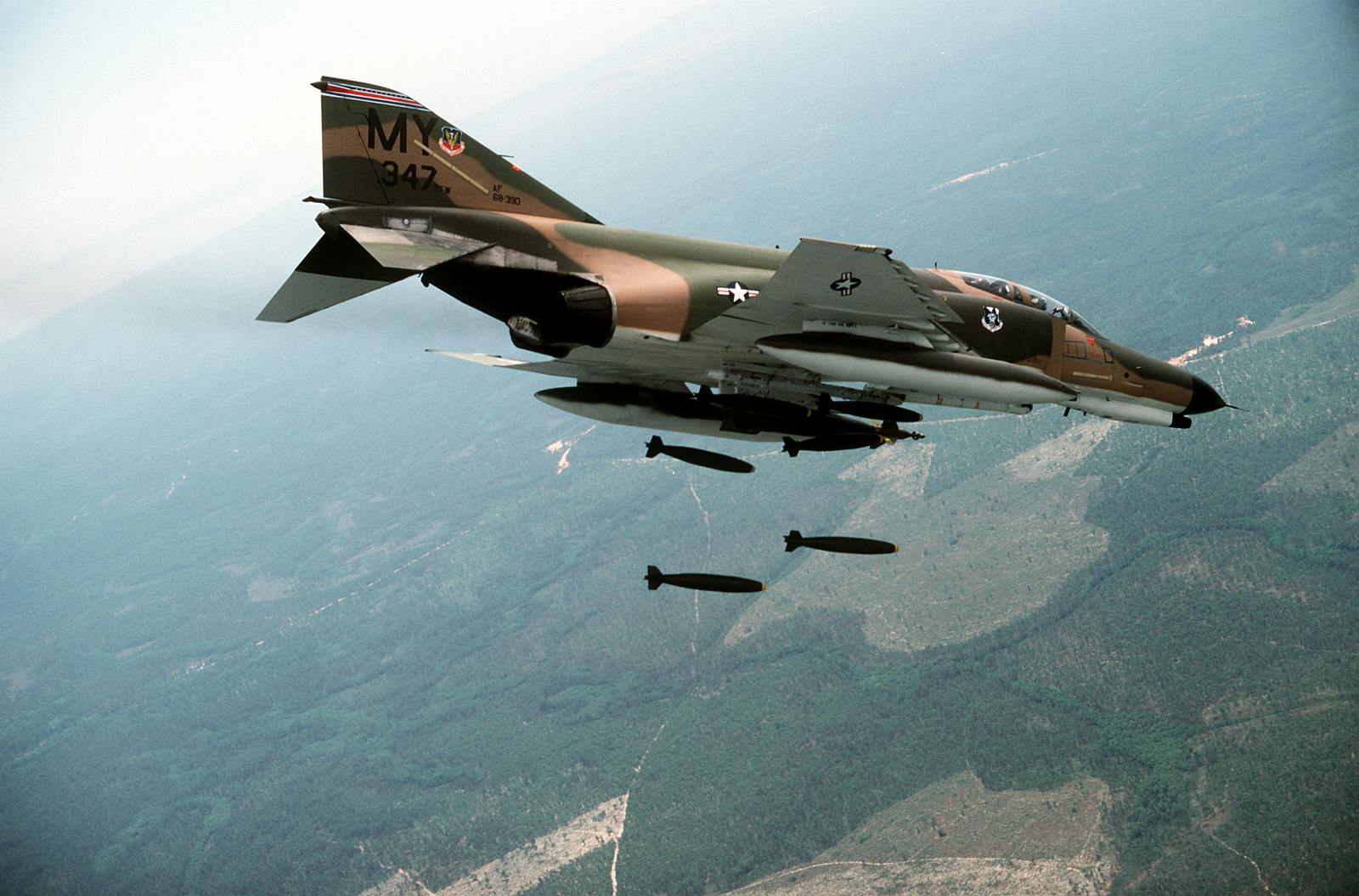
Blog
In the mid-1960s, at the same time that the “fighter mafia” were coming up with their concepts for smaller, lighter, faster, more reliable, and cheaper fighter jets (the result of which would be the fantastic F-16), the US Navy was fielding and improving what would become the most popular (by number of aircraft built) supersonic fighter in US history: the F-4 Phantom II. However, this huge, fast, heavy jet wasn’t what anyone would call svelte. Love it or hate it, this capable, versatile jet fighter/bomber/interceptor became the most feared aircraft in the Vietnam era, and it was good enough that it had an incredible 23-year production run and is still being flown by some militaries around the world today.
Let’s take a closer look at the F-4 and see what makes it so good, as well as looking at its foibles.
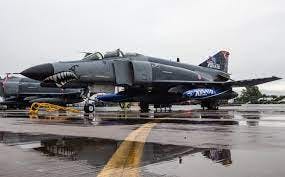
A moving target: The Navy’s changing requirements led to multiple F-4 Phantom false starts
Aircraft and aerospace companies like McDonnell often live or die according to government contracts, and in 1952, there were no new aircraft competitions forthcoming. No new aircraft competitions means a lot of expensive engineers and production lines sitting dormant, so McDonnell needed to drum up some business. After performing some internal studies, the aircraft firm determined that the US Navy had the greatest need for a new and different aircraft type: The attack fighter. So in 1953, McDonnell began revising and designing upgrades for its problematic F3H Demon single-engine, carrier-based fighter, looking to improve capabilities, range, and weapons options, to propose the concept to the Navy.
McDonnell tried both single- and dual-engine designs, one- and two-seat noses, and proposed the new potentially “modular fighter” to the Navy in September 1953. The Navy was sufficiently interested to order a full-scale mockup, but in the end felt that the upcoming Grumman F-9 and Vought F-8 already satisfied their need for a supersonic fighter.
The McDonnell team went back to the drawing board and reworked its design into a single-seat, all-weather fighter-bomber, including 11 external hardpoints for weapons. Things were looking up, as on 18 October 1954, the US Navy sent McDonnell a letter of intent for developing two prototypes (then designated YAH-1). However, 7 months later on 26 May 1955, the Navy sent representatives to McDonnell’s offices and, “Great news!” McDonnell was presented with yet another, entirely new set of Navy requirements, this time for an all-weather, fleet defense interceptor, including a second seat for the radar operator.
It’s certain that more than one McDonnell designer spent some quality time with his scream pillow, but within two months, the Navy had ordered two XF4H-1 test aircraft and five YF4H-1 pre-production examples, so it was clear to McDonnell that they were onto something that could potentially mean big money for the company and a great plane for the military.
Development continued, and the new Phantom prototype made its first flight on 27 May 1958. Results were so favorable that the F-4 testbeds soon found themselves being compared to and competing with the Navy’s single-seat XF-8 Crusader III test aircraft. Since it was deemed that the pilot’s workload for its intended mission parameters would be too much for one person, the 2-seat F-4 was selected as the Navy’s new Fleet Air Defense fighter/interceptor, with the first production F-4s being delivered in 1960 and the first operational squadron (VF-74) flying the Phantom II starting in 1961. (The thinking at the time was that forcing the pilot to perform radar duty in addition to all of his other tasks would overload the pilot. A similar philosophy led to the layout of the F-14 Tomcat and the 2-seat variants of the F-15 Eagle.)
So, McDonnell had pulled it off. Just 31 months after its first flight, the F-4 Phantom (they tried “Satan” as an initial name but cooler heads prevailed) was the US Navy’s fastest, highest-flying and longest-range fighter… and it would prove so versatile and effective that it would be produced for more than 20 years in multiple variants, and in greater numbers than any US supersonic fighter in history, at 5,195 examples built (5,057 by McDonnell Douglas in St. Louis and 138 in Japan by Mitsubishi Heavy Industries).
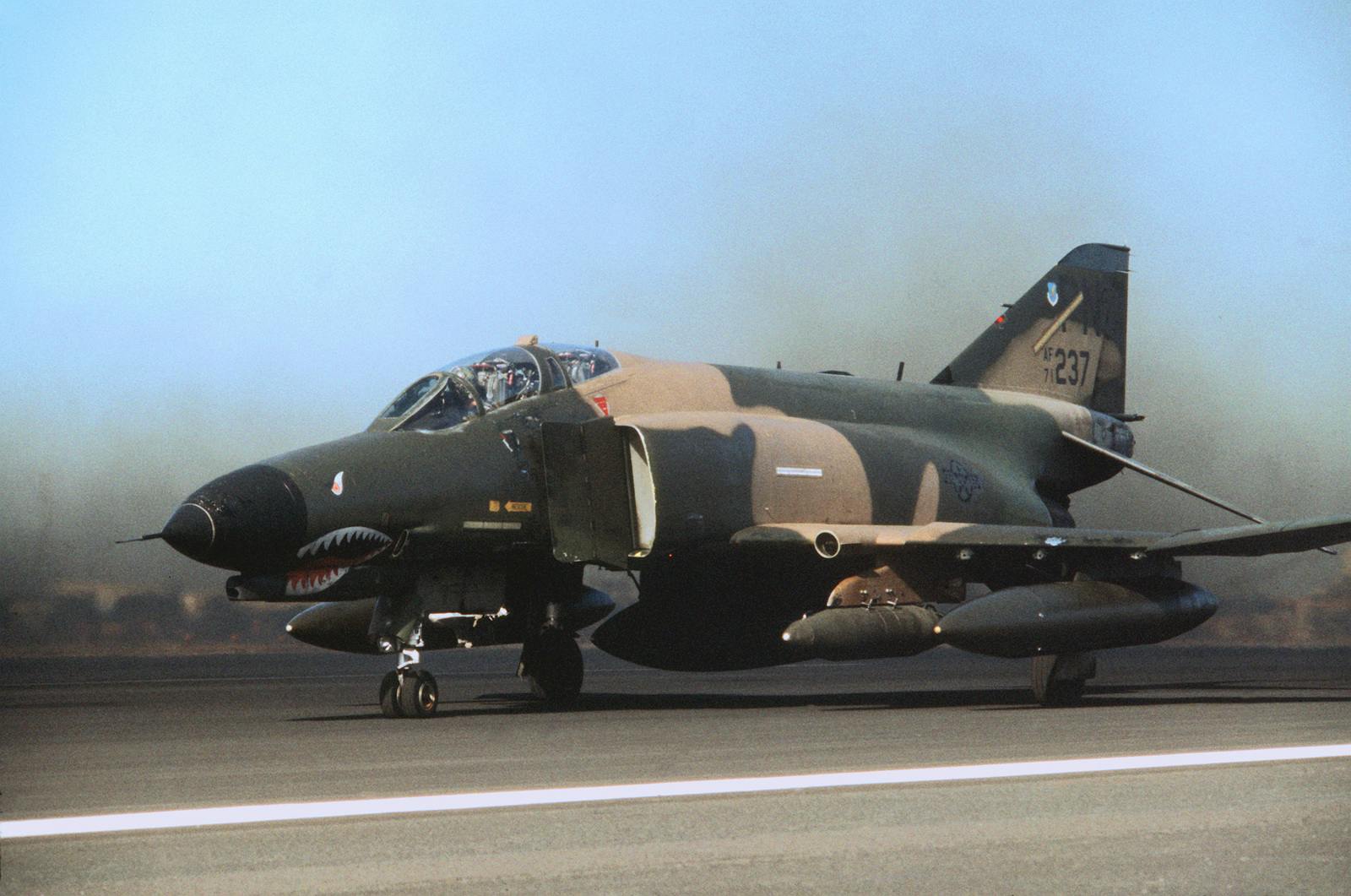
The F-4 Phantom II broke multiple speed and altitude records almost from day one
America loves speed, and our military aircraft designs often lean heavy on the horsepower rather than prioritizing handling nuance and flickability. The F-4 Phantom is no exception. Its powerful twin J79 engines helped the F-4 achieve a top service speed of mach 2.23 (1,473 mph) at 40,000 feet in level flight, and break multiple performance records over its service life—16 speed, altitude, and time-to-climb records in all. Defense Daily reportedly said the F-4 was an example of “the triumph of thrust over aerodynamics.” In one of its first flights on December 6, 1959, the Phantom performed a “zoom climb” and set a world record at 98,557 feet. In a September 1960 flight, a Phantom averaged 1,390.24 mph over a 62-mile course, shattering the previous record. In 1961, an F-4 set the world speed record at 1,606 mph (2,585 kph) on a 20-mile circuit. Also in 1961, utilizing several refueling tankers, a Phantom crossed the continental United States in 2 hours 47 minutes, averaging over 869 mph (including aerial refueling). When you put the hammer down in an F-4, you better hold on tight.
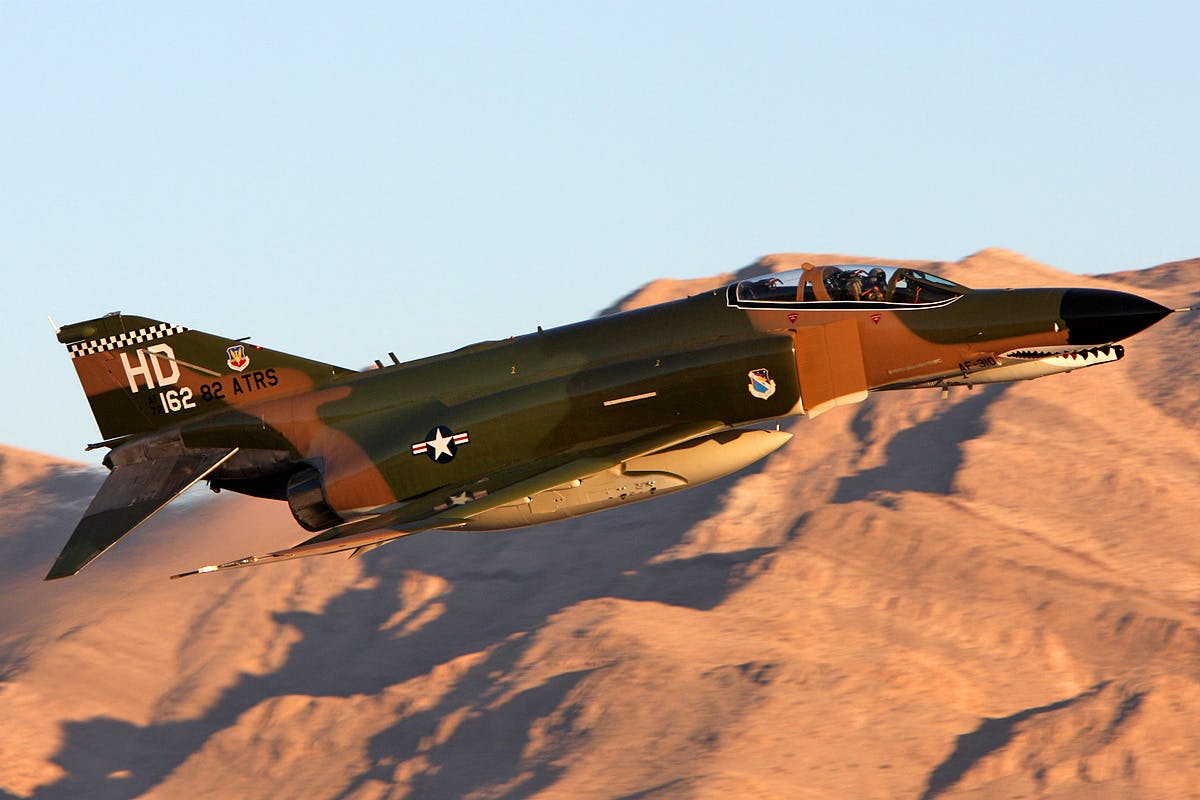
McNamara and the universal fighter concept resulted in multi-branch Phantom II success
Secretary Robert McNamara pushed for a fighter aircraft that could work for the US Navy, Air Force, and Marines, with minimal modifications for each branch. This would obviously save costs, simplify training, improve cross-branch functionality, and allow greater numbers of aircraft to be built in the face of a growing threat of global domination by the USSR and China. Luckily, the F-4 was up to the task. (McNamara also put the kibosh on the three branches’ former habit of maintaining separate and often confusing nomenclature for the same aircraft… so it was known as the F-4 by all three branches.)
By the end of the Vietnam war, the F-4 was the USAF’s primary all-around combat jet aircraft, and Phantoms downed more enemy aircraft than any other fighter during the conflict. The majority of F-4s would eventually be produced for that branch of the service (2,874 Phantoms went to the USAF, 1,264 to the Navy and Marine Corps, and the rest were sent to 11 foreign militaries around the world).
Through its long service life, the F-4 saw significant upgrades to its engines, avionics, and weapons, including the addition of an M61 Vulcan rotary cannon to satisfy requests from pilots who missed being able to “go to guns” in close dogfights. In addition to its advanced AIM-4 Falcon, AIM-7 Sparrow, and AIM-9 Sidewinder missiles and the capability for carrying up to 18,650 pounds (8,480 kg) of bombs, rockets, and even nuclear weapons on its nine external hardpoints, the F-4 had powerful, advanced Electronic Warfare tools for its time, including the first operational “look down/shoot down” capability in the F-4J variant with its Westinghouse AN/AWG-10 Fire Control System. The Phantom was also the first fighter equipped with the still-classified APX-80 “Combat Tree” targeting system, which according to one source allowed the Radar Intercept Officer (RIO)—today called weapons system officers/WSOs or “wizzos”— to use enemy planes’ own identification transponders to target them for long-range air-to-air missile attacks.
F-4s saw extensive combat beginning in Vietnam and going through Operation Desert Storm, and some Phantoms remain in service to this day in allied countries. In addition, both of the US military’s flight demonstration teams, the Navy’s Blue Angels and the Air Force’s Thunderbirds, flew the Phantom II from 1969 to 1973.
How much did an F-4 Phantom cost?
So how much did it cost to buy an F-4 Phantom during its production run? Unit flyaway cost was around $2.4 million for the F-4E variant in 1965 dollars, or around $22 million today. When you consider that the F-35 costs up to $135 million per copy, the overall excellence, versatility, and value of the Phantom starts to become apparent.
There was even an F-4 Phantom for sale to civilians in 2020 for $3.25 million… which we’d consider a bargain.
Why does the F-4 Phantom II look so badass?
While the F-4 has been called “ugly,” “the flying anvil,” “the flying brick,” “the iron pig,” “double ugly,” and even been described as looking like a “mean rat,” compared to some other airplanes of its era, the F-4’s lines have stood the test of time and it is a beautiful aircraft in the eyes of many. To our eyes it’s one of the coolest-looking jet fighters the US has ever produced, despite its considerable 58-foot length and 38-foot wingspan. Its upswept wing end sections hearken back to the radial-engined F-4U Corsair “gull-wing” fighter from WWII, while its lengthy, angular vertical stabilizer and downswept horizontal stabilizers look like something from Battlestar Galactica. Interestingly, the upswept wingtips were the result of wind-tunnel testing showing that for stability, the wings needed to be upswept (known as “dihedral” in engineer-speek) by 5 degrees. Rather than having to redesign (again) the titanium central section of the fuselage, some bright McDonnell engineer figured that if they just upswept the wingtips by 12 degrees, the overall average dihedral of the wings would work out to be the required 5 degrees. It worked.
The streamlined, aggressive-looking canopy, the powerful “two huge engines with some wings added” design, the “dog-toothed” leading wing edges with their upswept tips, intersecting visually along the long axis with the sharply “anhedral” down-angled rear stabilizers… it all just looks badass. The entire design conveys speed, sharp-pointy edges, and death to anyone who gets too close.
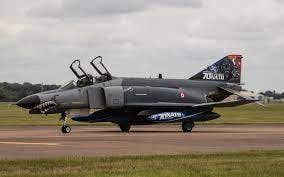
Problems with the F-4 Phantom
With such a rapid development cycle, it’s natural that the F-4 Phantom experienced teething issues. Some early aircraft suffered from leaks in their internal wing-mounted fuel tanks that required re-sealing after each flight. There were problems with aileron control cylinders, electrical connectors, and engine compartment fires, and 85 F-4s developed cracks in outer wing ribs and stringers, possibly due to being overstressed in dogfights with smaller, more maneuverable fighters, a task for which it wasn’t really originally designed.
The F-4’s powerful General Electric J79 engines “advertised its arrival with a smoke trail visible 25 miles away,” according to Smithsonian Magazine, and this was a not-insignificant downside that would take nearly 20 years to engineer out. Another nickname for the Phantom was “Old Smokey.” Luckily 25 miles was about the effective kill range of its radar system for its guided air-to-air missiles, so the F-4 could still kill you before you even knew it was there.
All those fancy new avionics weren’t without issues either. As Aviation Geek Club quotes Marine Corps F-4 RIO Randy Raines, “They were always broken. When you reported in from a flight it was ‘up & up’ if the plane and the avionics were working. ‘Up & down’ if the plane was OK but the avionics was down. I can probably count on two hands the number of times I called in ‘up & up.’ I was in four squadrons over my career and everyone of them had all the planes grounded until something could be fixed.”
Raines points out another potentially explosive issue: “Designed as an interceptor, the structure had a hard time handling the high G’s of 1V1 combat. Then there was the bleed air system (which I understand the USAF shut down) that bled hot exhaust gas over the leading and trailing edge of the wing when the flaps were down. That system was a continuous problem. Picture hot exhaust leaking next to a wing full of JP-5 [jet fuel]. We came pretty close to losing a plane because the crew didn’t recognize the problem and didn’t shut the valve controlling the system off.”
Despite these flaws, the F-4 proved capable and reliable in combat, and became a favorite of many pilots and RIOs. Raines concludes, “Having said all that, I loved the F-4. It was a great plane that always brought you home.”
Former Phantom pilot John Cheshire said, “It was an easy fighter to fly. However, because of its wide turning radius, it took some extra instruction on how to defeat tight-turning enemy aircraft. That added instruction worked.”
The US retired its last F-4s from service in 1996 (though it served far longer in Germany and elsewhere), and used some of its leftover Phantoms as remote-piloted drones for air-to-air and surface-to-air missile testing, a rather ignominious death for one of the greatest aircraft the US military has ever adopted. As Cheshire said of the F-4, “Of all the many aircraft and fighters I have flown, the F-4 Phantom will always be my favorite.”
Some F-4s are still in service today in Japan, South Korea, Greece, and Turkey. We hope this remarkable, controversial, yet overall excellent airplane has a long life yet to live.
–By Jeff Davis, Intergalactic Scribe
Sources:
https://en.wikipedia.org/wiki/McDonnell_Douglas_F-4_Phantom_II
https://duotechservices.com/f-4-phantom-from-the-beginning-of-its-life-cycle
https://www.smithsonianmag.com/air-space-magazine/what-couldnt-f-4-phantom-do-180953944/
https://www.cs.mcgill.ca/~rwest/wikispeedia/wpcd/wp/f/F-4_Phantom_II.htm